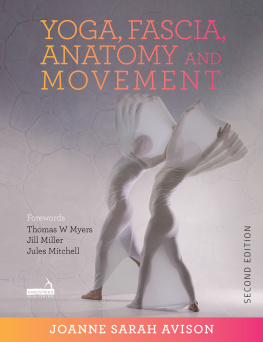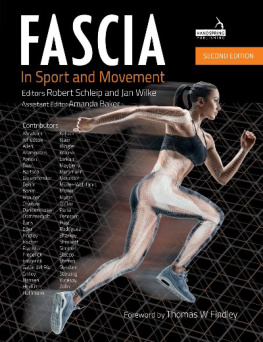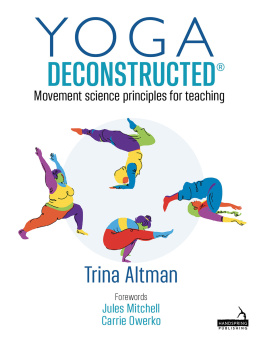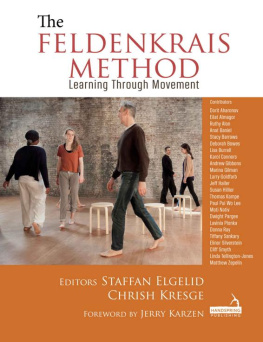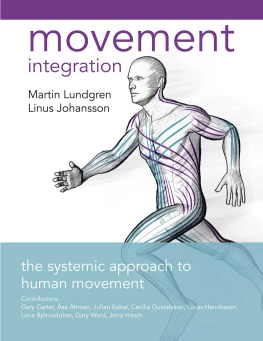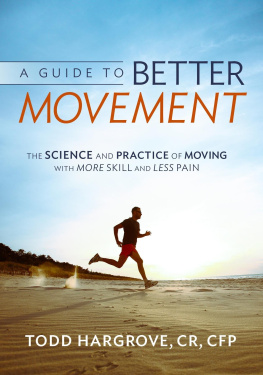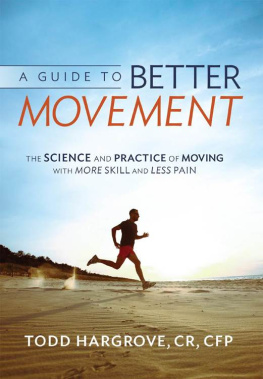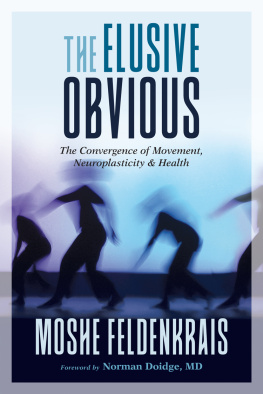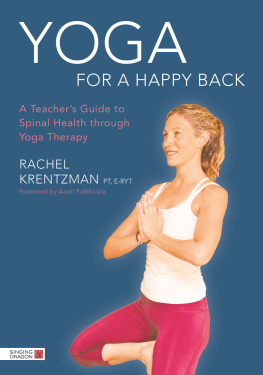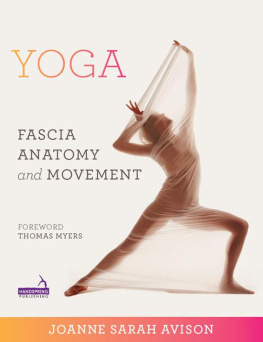Freedom to Move
Movement therapy for spinal pain and injuries
HANDSPRING PUBLISHING LIMITED
The Old Manse, Fountainhall,
Pencaitland, East Lothian
EH34 5EY, Scotland
Tel: +44 1875 341 859
Website: www.handspringpublishing.com
First published 2018 in the United Kingdom by Handspring Publishing
Copyright Handspring Publishing 2018
All rights reserved. No parts of this publication may be reproduced or transmitted in any form or by any means, electronic or mechanical, including photocopying, recording, or any information storage and retrieval system, without either the prior written permission of the publisher or a licence permitting restricted copying in the United Kingdom issued by the Copyright Licensing Agency Ltd, Saffron House, 610 Kirby Street, London EC1N 8TS.
The right of Josephine Key to be identified as the Author of this text has been asserted in accordance with the Copyright, Designs and Patents Acts 1988.
ISBN 978-1-909141-92-6
ISBN (Kindle eBook) 978-1-909141-93-3
British Library Cataloguing in Publication Data
A catalogue record for this book is available from the British Library
Library of Congress Cataloguing in Publication Data
A catalog record for this book is available from the Library of Congress
Notice
Neither the Publisher nor the Authors assume any responsibility for any loss or injury and/or damage to persons or property arising out of or relating to any use of the material contained in this book. It is the responsibility of the treating practitioner, relying on independent expertise and knowledge of the patient, to determine the best treatment and method of application for the patient.
Commissioning Editor Sarena Wolfaard
Project Manager Morven Dean
Copy editor Ceinwen Sinclair
Designer Bruce Hogarth
Indexer Aptara, India
Typesetter DSM Soft, India
Printer Melita, Malta
The
Publishers
policy is to use
paper manufactured
from sustainable forests
|
CONTENTS
Our modern, busy lives can often lead us into a perpetual fight, flight, or freeze state an appropriate response to short term stress, but inappropriate if it ends up being our long-term, habitual response to life. The way we respond to stress affects us in a myriad of ways, including the way we rest and digest food, the way we interact with ourselves and others, and ultimately, how we move.
Stress can be positive (eustress) as well as negative (distress), and it would seem that those who view stress as character building and strength cultivating often feel more content, and according to evidence, live longer and with less disease. How, then, do we get to that point of using stress to build strength?
Close your eyes, and think of the last time you felt totally at ease. Freedom to Move , by Josephine Key, is an invitation into that gracious space. An invitation to move with creative ease, with mindful fluidity, and with safety and efficacy. It is born from the authors experience, research, and freedom to experiment with her craft, physical therapy and human movement.
The human body is born to move. It is an incredible design. An ever-hopeful organism in persistent allostasis with unlimited potential. Our body is more than a complex machine, it is an enigma, and one to be embraced.
This text extends an invitation to move in a way that is congruent with the latest science, all the while acknowledging that there is no clear winner in the research when it comes to movement approaches. A pragmatic approach to explore the intricate, ever-layered potential that human movement harnesses, the individualized, biopsychosocial approach this book embraces has emerged as the best fit way to offer multiple entry points for healing and well-being. This text gives you the tools to tackle the bio portion of the model, and when it comes to chronic and persistent pain, the biopsychosocial model and its personalized, multidisciplinary team approach is the gold standard.
As a veteran physical therapist in sports medicine and womens health, I spend most of my time working on stress response and neuromuscular patterning with my patients, and the distinction between muscle strength and endurance from motor control is a key part of what can make this text so helpful for many. The icing on the cake is the inclusion of the complex role of fascia and our emerging understanding of the science of its function. Our robust ception system, from proprioception to neuroception to interoception (there are many more), is a bio-directional system that is intimately influenced by the gut microbiome and our cranial nerves and their subsequent vagal-driven pressure system. When we begin to appreciate polyvagal theory, for example, we begin to understand the deceptively simple on the surface only power of movement and its potential to transform the human experience. Keys text is once again a call to understand and experience the deeper layers of influence and potential in human movement.
Stephen Hawking said that we do not experience the world so much as we experience our own nervous system. We are not simply a vessel for information in and information out we are capable of change in a profound way. We are plastic, meaning that the human mind and body is elastic in a way that allows us to be in control of our own transformation. Since movement is a sensory experience, we can use it to change and alter the way we move and assume posture, which is the essential message of the text. Neuroplasticity is the key to transformation which is good news for everyone who picks up this book. You have the potential to change your bodys perception of and experience with pain!
We can change the pain experience, one movement and one thought at a time. It is why mindfulness is the key to effective physical training and recovery. Debunking back and spinal pain myths. Key presents the evidence in a way that clears the air of conflicting information further vetting the biopsychosocial approach as a reliable and valid method for addressing the pain experience, while also paving the way for recognizing and teaching some key elements that movement must include.
For example, the childs song, the hip bones connected to the back bone, the back bones connected to the rib bone, the rib bones connected to the breathing bone holds a perennial truth. No, there is no breathing bone, but the point is this everything is connected. Breathing is connected to every intimate process in the body. And those connecting points between the shoulder, the spine, and the pelvis, are connected to breathing and one another. The concepts of autonomic function, impacting stress response, and regional interdependence, are but a few of the important issues in this text. Seemingly unrelated impairments in one area of the body can be influenced by or influence your primary pain or stress experience, which is important since the spine is connected to everything.
Affecting health through the three major diaphragms of the body (laryngeal, respiratory, and pelvic) through mindful movement and pressurization (intra-abdominal pressure, intra-thoracic, intra-pelvic, and subglottal pressures) is another key component of the exercises introduced in this text. Weaving in yogic breathing, for example using ujjayi as a glottal control technique, is an effective way not only to improve spinal health and pressurization, but also to introduce meditation and mindfulness, which is requisite to changing movement behavior and impacting overall health.


